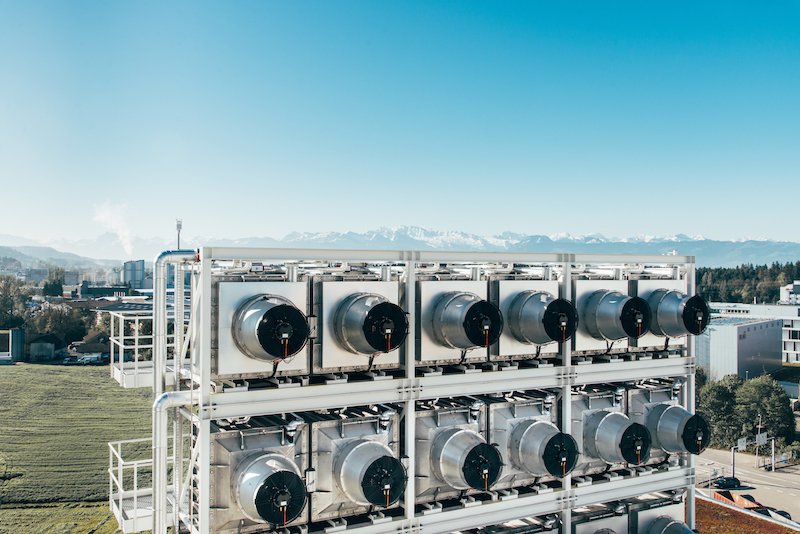The pace of international carbon dioxide emissions reduction is insufficient to limit global average temperature rise to 2 degrees Celsius.
Even with rapid decarbonization of power generation and increased electrification of buildings, transportation, and industry, humanity will need to remove and sequester on the order of tens of gigatons of CO2 from the atmosphere annually by midcentury to mitigate existential risk to the most vulnerable members of our species and many others.
Prime Coalition is dedicated to supporting carbon dioxide removal (CDR) solutions and the entrepreneurs behind them, recognizing that CDR is a necessary element of advancing our nonprofit mission to mitigate climate change. With support from the William and Flora Hewlett Foundation, we have been evaluating the challenges and opportunities of investing in nascent CDR technology solutions since June 2019.
We are excited that last fall Prime Impact Fund closed an investment in a CDR company – the second CDR investment Prime has facilitated since our founding in 2014. Today, by sharing our perspective on the industry and three tools we developed to aid in our own investment diligence process, we hope more members of the climate-minded investor community will join us in accelerating the development and deployment of these critical solutions.
Staring down the gigaton-scale carbon removal challenge, there is hope in the broad portfolio of natural and technological CDR approaches. Advocates of U.S federal CDR policy like the Carbon Capture Coalition, Carbon180, and others have made progress, but public support remains insufficient, leaving funding gaps that the private sector must fill.
At Prime, we believe catalytic capital has an important part to play in supporting solutions across asset classes, sectors, and stages of commercial readiness, by de-risking novel reforestation business models to supporting nascent technologies and entrepreneurs on their commercialization journey. With the scale of CO2 removal required and the uncertainty of any one pathway’s success, public and private investors must adopt a “yes and” approach to CDR.
Existing CDR solutions with costs below $100 per ton of CO2 sequestered from the atmosphere are all natural climate solutions, including reforestation, avoided deforestation, soil sequestration, and waste-biomass energy facilities with carbon capture and storage (BECCS). The National Academy of the Sciences estimates that up to 10 gigatons of CO2 per year could be mitigated through natural solutions by 2050 should we increase their deployment.
Programs like the Terra Silva impact investing collaborative, a $90 million partnership between the David and Lucile Packard Foundation and the John D. and Catherine T. MacArthur Foundation, and The Terraton Initiative by Indigo Agriculture, showcase growing action by the private sector to accelerate natural strategies. And while natural climate mitigation is critical, humanity will need to sequester gigatons beyond what natural solutions alone can feasibly attain by 2100.
Catalyzing carbontech
To meet the remaining gap, we must support underexplored, underdeveloped, and nascent technological approaches to capture and store excess atmospheric carbon. Development of Direct Air Capture (“DAC”) to provide CO2 for subsequent utilization and sequestration will be critical, and while not technically carbon removal, point-source capture of CO2 from the flue gases of cement, iron, steel, and chemical production plants can have gigaton-scale impact on difficult to decarbonize industries.
CO2 can be stored and utilized through nascent and near-commercial “carbon-to-value” or “carbontech” approaches, creating products like fuels, building materials, plastics, chemicals, and consumer goods, with potential for trillions of dollars per year in revenue while displacing fossil fuel feedstock.
Storage opportunities like geologic sequestration of CO2 underground are already underway at megaton scale annually, with additional sequestration approaches under exploration. These nascent approaches include carbon mineralization, or “enhanced weathering” of magnesium and calcium-rich rock to form mineral carbonates, processes to increase the long-term storage of CO2 in the ocean, and biomodification of crops for greater carbon-uptake.
Despite these opportunities to advance climate mitigation goals, early-stage capital for innovation is falling short. For sense of scale, the National Academy of Sciences recommends US federal spending of $70 million per year to support Mineral Carbonation research, development, and pilot deployment partnerships with industry, but very few lab groups have ever received venture funding and fewer still are at or near-pilot stage.
Unfortunately, many CDR technologies don’t look like the companies that venture capitalists typically invest in– they’re not new software solutions, business model innovations, or financial instruments – they’re “tough” technologies, risky hardware-based solutions that are much more difficult to develop and costly to validate.
Many CDR technologies are also entering markets that are nascent, some are restricted by prescriptive industry standards, while others depend on policy support. Conventional venture capitalists are less likely to support the long development timelines, capital intensity, and political and technical uncertainties associated with these investments, as evidenced by the historical capital gap for hardware-based startups and disproportionately higher investment flows into capital-light cleantech ventures.
Modeling the future performance of novel lab-scale technologies can be prohibitively difficult, such as calculating the technoeconomics of a new DAC system or the net-carbon footprint of a synthetic fuel electrochemically converted from CO2. With the wide field of innovative processes and products, even differentiating opportunities for gigaton-scale mitigation from enterprises with less meaningful climate-impact can be a complex challenge.
Catalytic capital can employ patience and a higher tolerance for policy uncertainty than market-rate sources of capital. For example, at Prime, our paramount goal is to maximize the climate impact of our capital. With this in mind over the past nine months, we evaluated the array of CDR and Carbon Capture, Utilization and Sequestration (“CCUS”) approaches to ensure our investment approach in this area, pipeline of investment opportunities, and diligence processes are as robust as possible.
Assessing carbontech
Based on our core investment criteria – potential for gigaton-scale CO2 emissions reduction, potential for follow-on investment from commercial investors, and additionality – we recently identified four technology categories to prioritize our own investment focus: DAC, Mineral Carbonation (Building Materials & Enhanced Weathering), Synthetic Fuels, and Terrestrial Carbon Removal (Biomodification of Crops, Soil Amendment, Forestry), though we remain open to evaluating CCUS options outside of these four areas as well.
Over the past six months, we worked with academic partners to develop three tools to assist with our evaluation of new technologies and due diligence of specific investment opportunities. We are eager to share these spreadsheet-based tools with the public in hopes that they might make evaluation easier for other investors and encourage others to participate in ways that make sense for their own interests and constraints.
Carbon accounting. The CCU Carbon Accounting Tool calculates and visualizes the life cycle carbon footprint of carbon utilization products. Key performance variables of technologies can be modified based on company claims to understand the impacts of novel approaches relative to conventional production methods, helping the user identify which pathways and products are most impactful and where these subprocesses can be further optimized.
Technical performance. Two Technoeconomic Assessment tools were developed for DAC and Mineral Carbonation at Worcester Polytechnic Institute. These tools provide comparisons and projections for the technical performance of novel systems, using published literature values and modeled process chemistry. Users can leverage inputs to generate projected costs, perform sensitivity analysis to identify key performance variables, and cross-check company claims against an independent model.
Excel files of the three tools as well as user guides are available for download on Prime’s website here. Elements of the Carbon Accounting Tool will also be integrated to the public launch of the CRANE tool in April 2020.We invite the broader climate-focused investment community to join us in accelerating the development and deployment of critical CCUS solutions in our collective fight to mitigate climate change.
James DeCunzo is a fellow, Johanna Wolfson is principal and Sarah Kearney is executive director at Prime Coalition. Jen Wilcox, Noah McQueen, Caleb Woodall also contributed.











